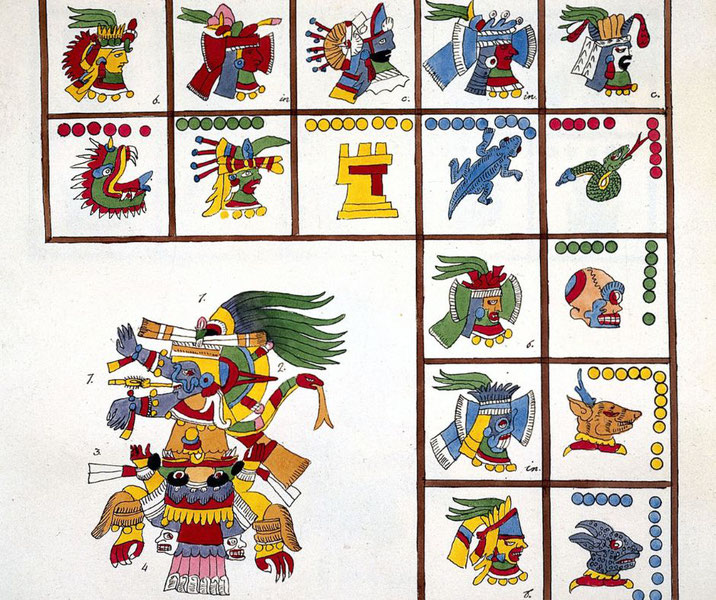The shocking mysteries of Aztec religion

The most notorious part of Aztec culture from a modern point of view was their religion. This is primarily due to the fact that human sacrifice was part of their system of ceremonies. However, this was not the only part of their religious practice.
The Aztec culture was deeply concerned with their gods and the position of humans in the universe. The whole year held religious significance for the Aztec, and each month involved at least one major religious festival.
The main focus of many of the festivals was related to the agricultural cycle, which was a significant concern for the Aztec.
Who took part in Aztec religion?
Religious events involved the wider community in the Aztec capital city of Tenochtitlan.
The members of the nobility attended and dressed in extravagant clothes to fit the occasion.
The Aztec emperors were considered to be divine beings themselves, and they were believed to have a special connection to the gods.
They would perform rituals and make offerings to the gods on behalf of the entire empire, asking for their blessings and protection.
In addition to the emperors, other members of the royal family played important roles in the Aztec religious system.
For example, the high priest of the Aztecs was usually a member of the royal family, and they were responsible for overseeing the many religious ceremonies and rituals that took place throughout the year.

Why did the Aztec sacrifice people?
The killing of other human beings was an important part of Aztec religion. The Aztecs believed that their gods required regular offerings of human blood to keep the universe in order.
In fact, the Aztec were not the only culture in the Americas to use human sacrifice, and evidence of this practice is found in a number of cultures, including Peru.
Many victims of this practice were captured enemy soldiers from various wars that the Aztec fought.
However, some of the sacrificial victims came from royal, noble or priestly families. Sometimes, even children were sacrificed.
Some of those killed in the sacrifices were actually volunteers. The Aztec believed that to die in a sacrifice was a special privilege, and that the gods had particular rewards for those who did so willingly.
Aztec beliefs about the afterlife
Similar afterlife benefits were also given to Aztec warriors who died in battle and women who died giving birth.
After death, all of these people went up to the heavens to accompany the sun. The warriors were thought to return to earth as hummingbirds after four years traversing the sky.
Meanwhile, most of the deceased were believed to descend to Mictlan. This underworld featured nine 'levels' which they had to travel through, overseen by Mictlantecuhtli, the god of death, who was depicted as a skeleton-masked figure.
The journey through Mictlan was thought to take four years, after which the deceased would arrive at the ninth hell and cease to exist.

Important religious ceremonies
One spring festival was for the god of spring and new vegetation, Xipe Totec. Known as Tlacaxipehualiztli, meaning "Flaying of Men", the Aztec priests regularly sacrificed enemy warriors who had been captured in war.
The victims would be taken to the top of a temple, their hearts removed, and their skin flayed and worn by the priests for days.
At the end of the year, there was a five-day period known as Nemontemi. The Aztec calendar was divided into 18 months, each with 20 days, totalling 360 days.
To complete the solar year, an extra five days were added at the end. These days were considered to be a time of bad luck.
During this 'week of misfortune', Aztec stayed in their houses and no activities were carried out as it was believed that only bad things would result.
This included cooking, trade and even getting married.
The New Fire ceremony
One particular festival, known as Toxiuhmolpilia (or Xiuhmolpilli), only happened once every 52 years and marked the end of a full cycle of the Aztec calendar.
This was the ceremony of 'New Fire'. During this event, activities would cease and fires in both homes and temples were extinguished.
Once more, priests participated in human sacrifice by removing the heart from a victim and lighting a fire in his chest.
The flame from this fire was considered particularly sacred, and priests would light torches from it and then take it to the cities and temples throughout Tenochtitlan so new fires could be lit.
This important ritual signified a time of renewal of the sun and a successful ceremony ensured the start of another 52-year cycle.
What do you need help with?
Download ready-to-use digital learning resources
Copyright © History Skills 2014-2025.
Contact via email
With the exception of links to external sites, some historical sources and extracts from specific publications, all content on this website is copyrighted by History Skills. This content may not be copied, republished or redistributed without written permission from the website creator. Please use the Contact page to obtain relevant permission.





